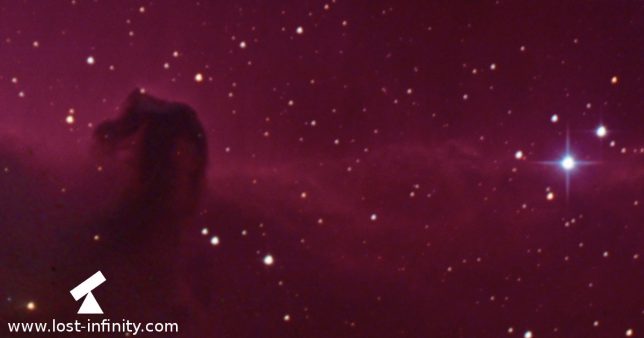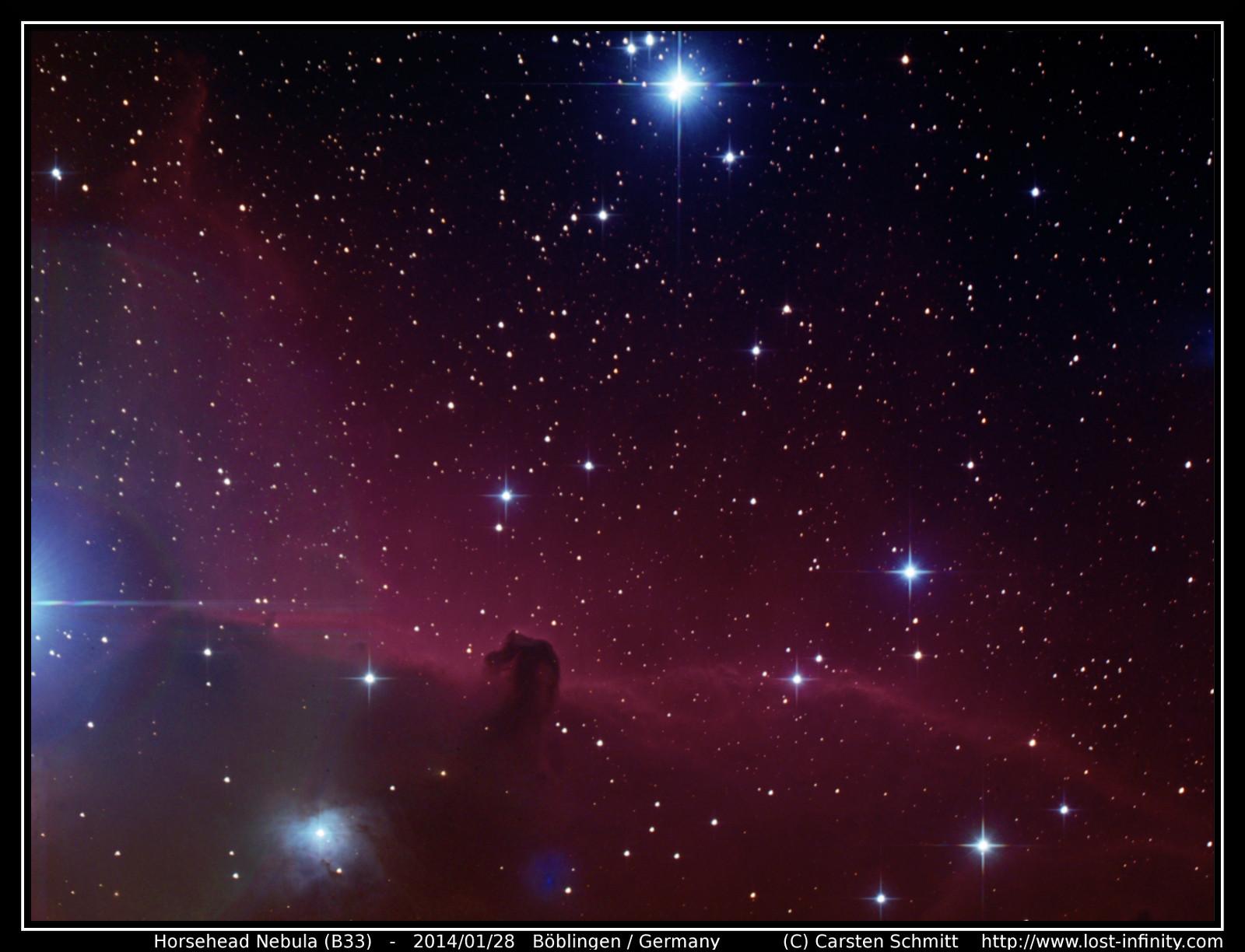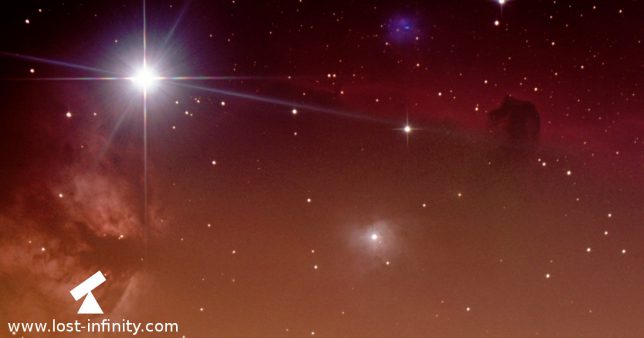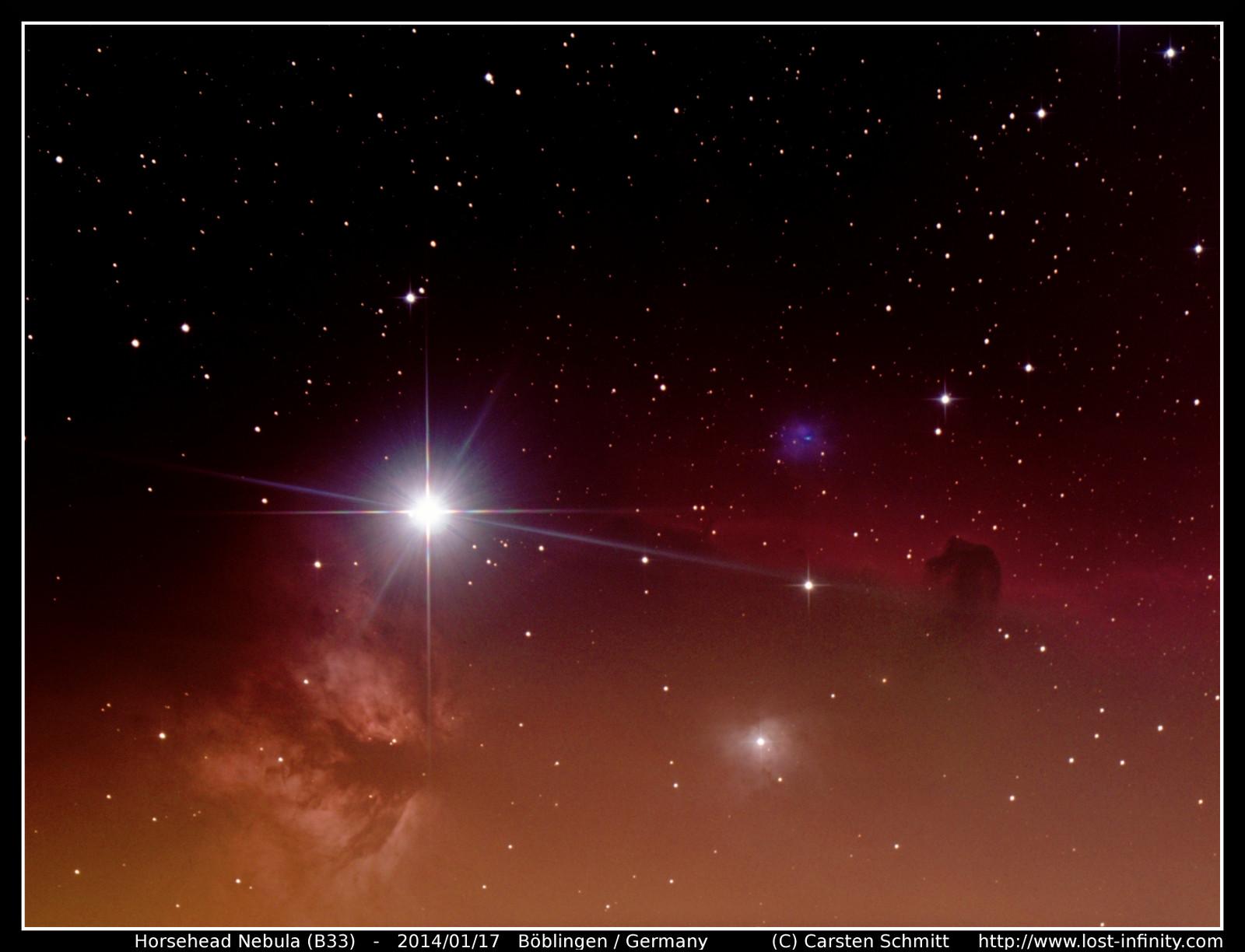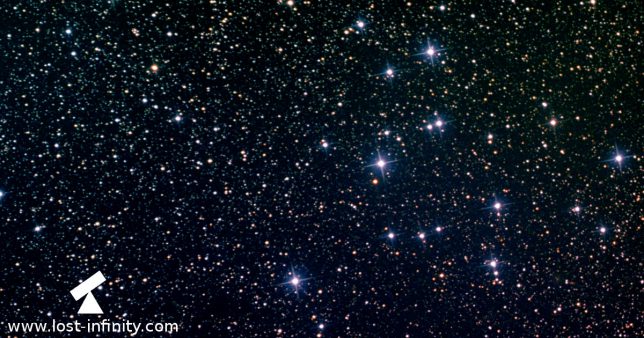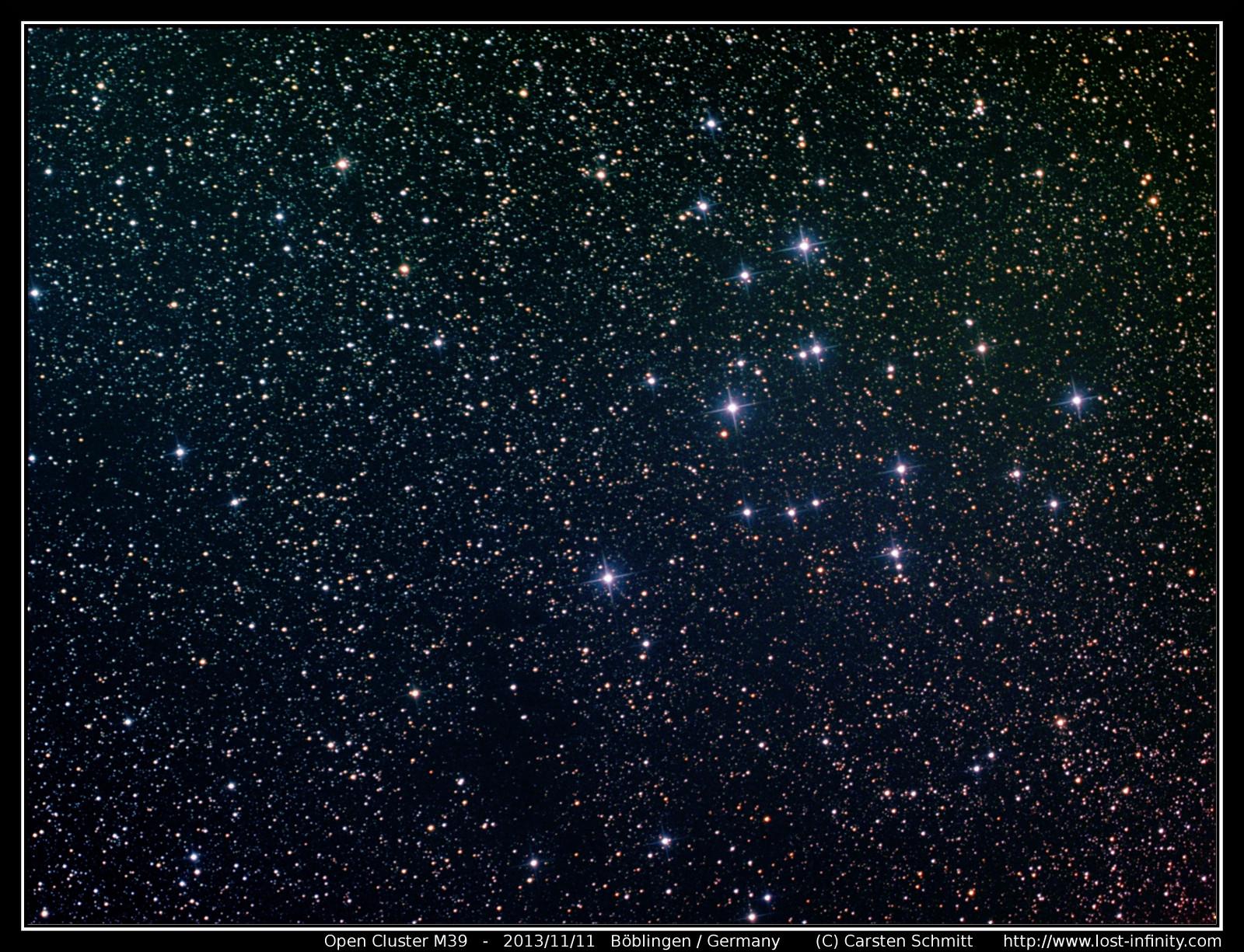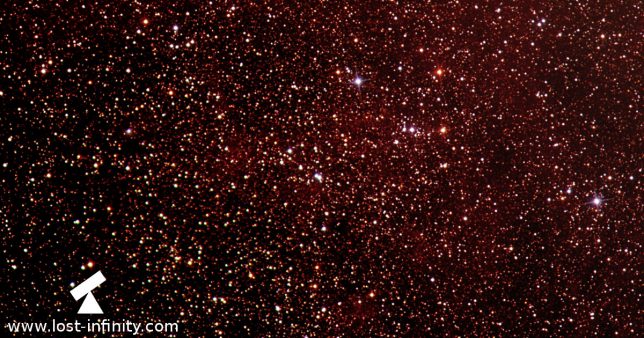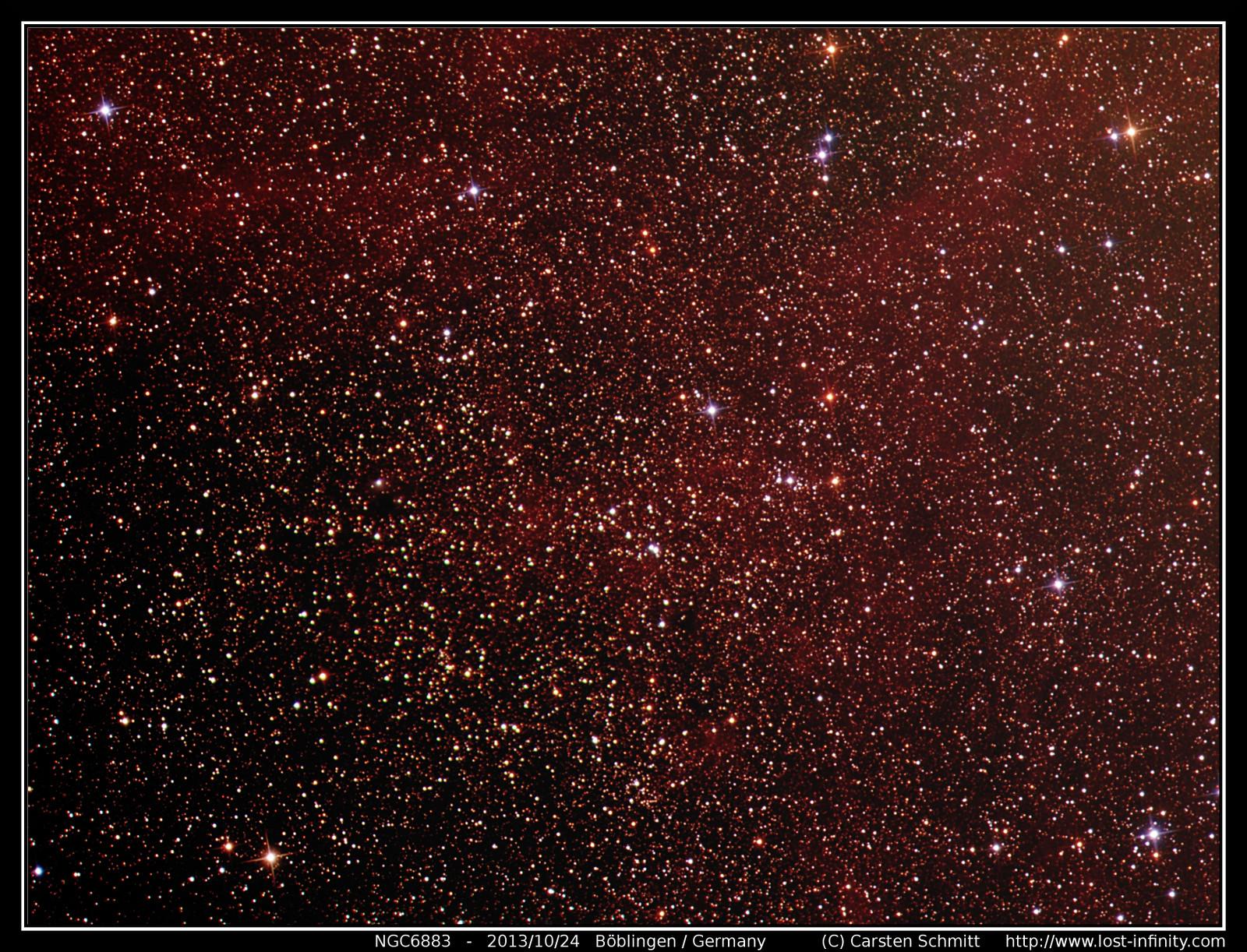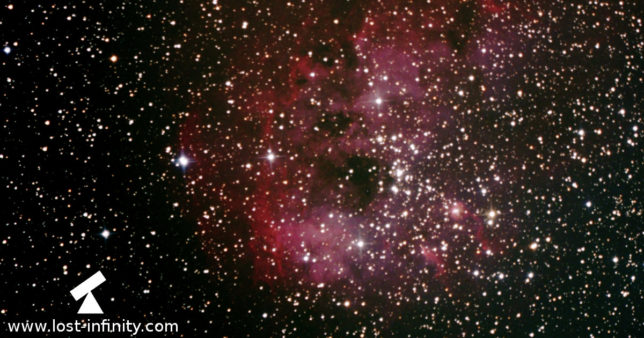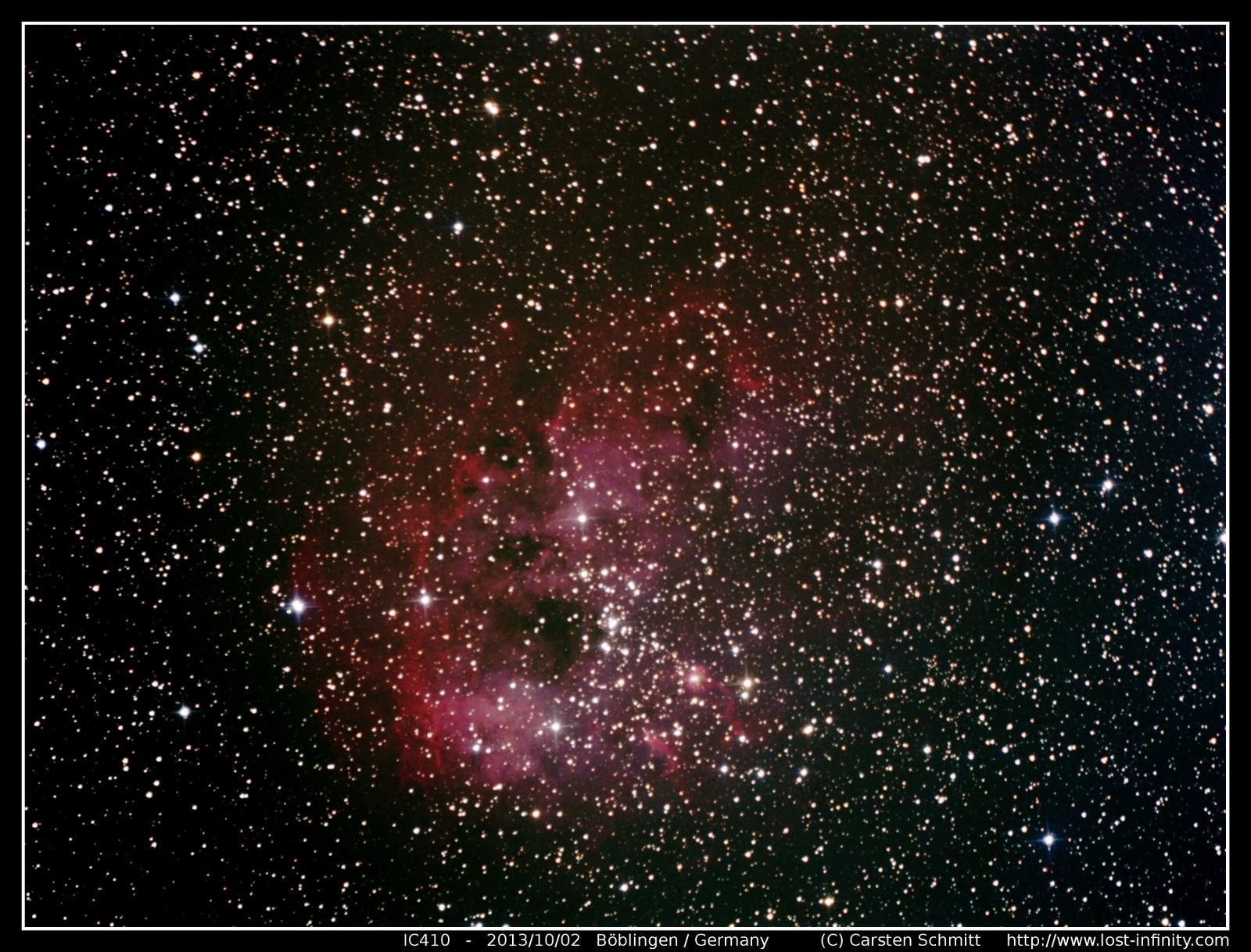I tried to image this nebula two times before. In both cases I was not satisfied with the result. The previous attempts you can find here and here.
One problem was caused by the very bright star which is located left to the horse head. In one of the previous pictures it draws the attention away from the actual subject.
 | Date | 2014/01/29 |
 | Location | Böblingen / Germany |
 | Object | Horsehead Nebula (B33) |
 | Camera | Atik383L+ |
 | Guiding | yes, DMK31AU03.AS via OAG |
 | Telescope | 8" GSO Newtonian |
 | Barlow lens | none |
 | Mount | EQ6Syntrek |
 | Cooling | -15°C |
 | Luminance | 9x 550s, bin: 1x1 |
 | Red | 7x 230s, bin: 2x2 |
 | Green | 7x 230s, bin: 2x2 |
 | Blue | 7x 230s, bin: 2x2 |
 | Dark | 10x |
 | Flat | 10x |
 | Total exposure | ~2h43min |
Therefore, I spent quite some time to arrange and rotate the camera so that the horse’s head was in a good position. Of course this is a matter of taste in the end…. This time I an fully satisfied with the result.
There is also a full resolution image of the Horsehead nebula available. I decided to put this picture into My Top Astro-Pics gallery.
Clear skies!
Last updated: June 20, 2022 at 10:05 am




























